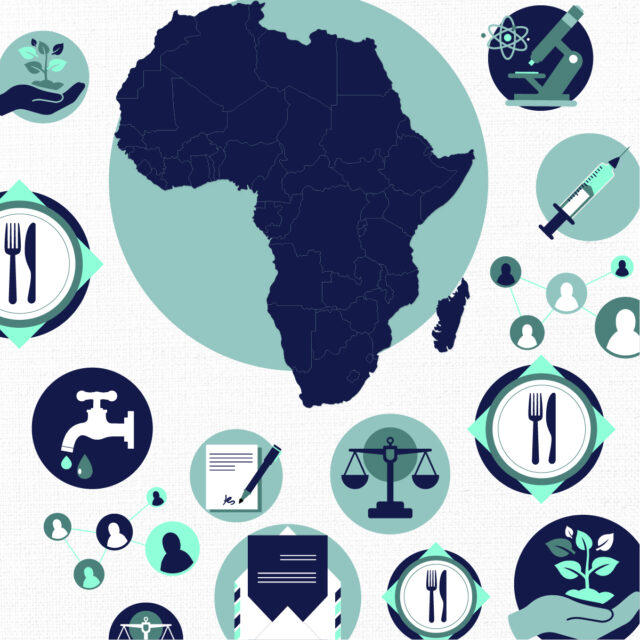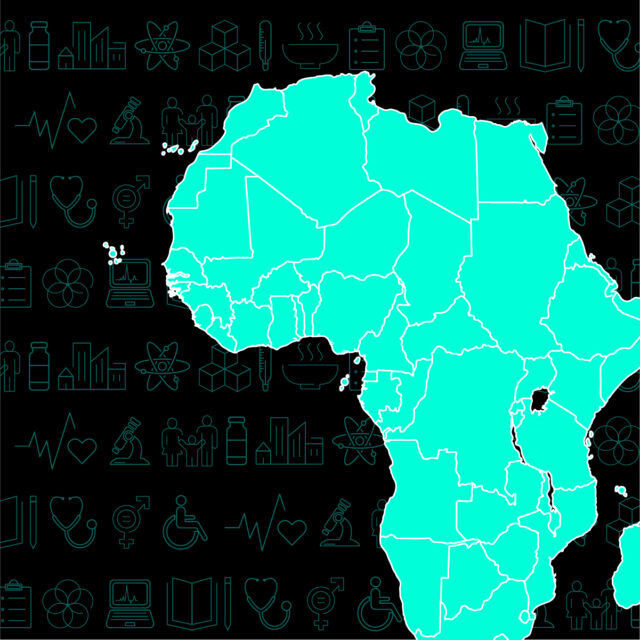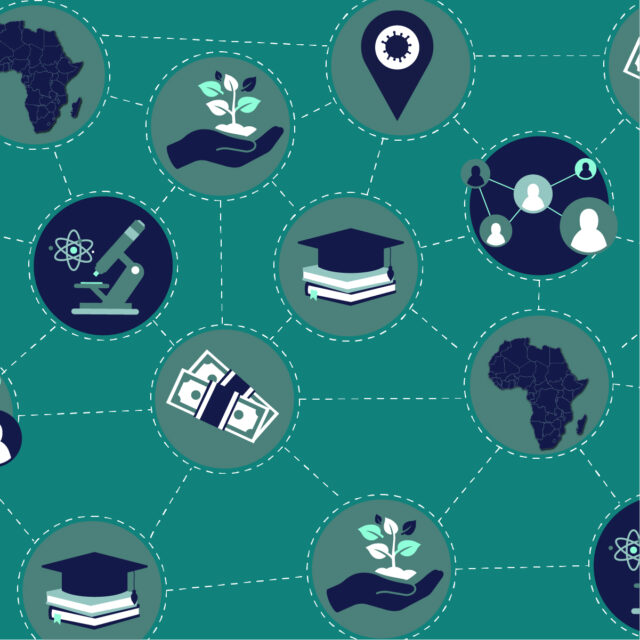Top news
Beware the bottlenecks: The massive disruption to global supply chains could hamper the world’s economic recovery, and potentially require a redesign of the world’s shipping infrastructure. Nearly 13% of the world’s cargo ship capacity is tied up in delays, creating a domino effect of bottlenecks. “The supply chain is overwhelmed and inundated. It’s not sustainable at this point,” said the head of the US’s Port of Savannah, which, like many ports around the world, is overwhelmed by a glut of stranded full shipping containers. G7 Finance Ministers have agreed to work together to address global supply chain pressures.
Growing pains: Despite supply chain issues, the global economy is currently enjoying a resurgence, with the IMF projecting 5.9% growth in 2021. That figure, however, masks a growing divergence between rich and poor countries, driven by a disparity in how they’re weathering the pandemic. The expected 2021 growth is 9% and 6% for China and the US, respectively, while sub-Saharan Africa’s growth is projected to be just 3.7%.
Compounding problems: The economic divergence is the result of disparities in vaccine access and fiscal responses. Nearly 74% of vaccines administered globally have been in high- and upper-middle income countries, compared to just 0.4% in low-income countries. Advanced economies have invested nearly 28% of their GDPs in their pandemic recovery, while low-income countries are spending just 1.8%. Compounding the problem, emerging and lower-income countries, faced with tightening financial conditions, are more quickly withdrawing fiscal policy support. Meanwhile, global public debt has soared to 100% of GDP.
A tale of two recoveries: The slower recovery in poorer countries has lasting implications. This year, the average incomes of people in the bottom 40% of global income distribution are 6.7% lower than pre-pandemic, compared to 2.8% lower for those in the top 40%. The reason: unequal pandemic recoveries. Those in the top 40% have recovered 45% of their pandemic income losses, while the bottom 40% are yet to start recovering. Consequently, 97 million more people are now living in extreme poverty. Loss of income, insufficient food, and missed educational opportunities will have long-term effects on inequality and social mobility. Urgent measures are needed to rapidly support the economic recoveries of low-income countries, including increased vaccine access and economic support such as the reallocation of SDRs.
Aid and a bet: The UK government announced it will commit over £1 billion worth of SDRs to the IMF’s Poverty Reduction and Growth Trust (PRGT) to support vulnerable countries. That’s welcome news, but the UK is rightfully being criticized for counting SDRs allocated to the PRGT as part of its 0.5% of GNI allocation to foreign aid. The UK is the only country to do so. The IMF has expanded the PRGT by $24 billion over the past 15 months, but says it needs additional resources of up to $50 billion to meet the needs of low-income countries, as well as 2.3 billion in SDRs to subsidize lending via the PRGT at zero interest rates. South Korean Finance Minister Hong Nam-ki said his country will contribute $634 million worth of SDRs to the PRGT. The Nigerian government, which received $3.35 billion in newly allocated SDRs, says it will use the funds to pay down its budget deficit, potentially enabling it to avoid external borrowing in 2022.
Dubious anniversary: It’s been one year since South Africa and India proposed a TRIPS waiver to help speed up the global response to the pandemic. Unfortunately, there’s little to celebrate. Despite the support of more than 100 countries, the waiver remains a birthday wish. Hoping to spur action, protesters gathered outside the Belgian, Dutch, and US embassies in South Africa, urging those countries to help break the waiver impasse to free up patents critical for scaling up the production of COVID-19 vaccines, treatments, and tests. Meanwhile, the UK government appointed Matt Hancock as special representative to the UN to focus on helping African countries recover from COVID-19. Critics have accused Hancock of preventing low- and middle-income countries from producing their own COVID-19 vaccines while serving in his former role as UK health secretary.
Cause for optimism? The world is on track to have all the COVID-19 vaccines needed to achieve global vaccination sometime in 2022. That would require equitable distribution, which of course hasn’t happened. To address that, the WHO launched a detailed roadmap for achieving the WHO’s targets to vaccinate 40% of the population of every country by the end of this year and 70% by mid-2022. Many lives depend on its success.
Sharing is caring: Moderna has come under fire for focusing its COVID-19 vaccine sales on rich countries, where it stands to make the most profit (Pfizer has been similarly criticized). In addition, Moderna, which last year received praise for announcing it wouldn’t enforce patent infringements on its COVID-19 vaccine, says it won’t share how it’s actually made, which would help scale up production. The company claims that producing the vaccine on its own is better and that it will deliver 1 billion doses to low-income countries in 2022. Charting a different path, AstraZeneca has licensed vaccine production to the Serum Institute of India and sells its vaccine at cost to low-income countries.
Vaccine gender gap: New research by CARE suggests that women in low- and middle-income countries are less likely than men to get the COVID-19 vaccine, compounding existing gender inequality. In South Sudan, women account for just 26% of people vaccinated, despite representing 70% of those testing positive. Vaccine access for women can be hindered by lack of access to or money for transportation, or by cultural norms that expect women to seek a male’s approval before accessing healthcare.
Catastrophic exclusion: COVID-19 deaths were nine times higher among people with learning disabilities than the general population during the first lockdown period. People with disabilities in Africa and Asia have been “catastrophically” excluded from COVID-19 pandemic planning and relief efforts, according to research by Inclusive Futures, leaving disability groups to step in and fill significant gaps. School closures are exacerbating educational challenges for people with disabilities, and a new UNICEF The State of the World’s Children report estimates that 13% of adolescents aged 10–19 live with a diagnosed mental disorder. A joint project by FIFA and the French and German development agencies that focuses on vulnerable populations is aiming to tackle the negative social impacts of the COVID-19 pandemic, including in several African countries.
Missing out: Most of the people interviewed by Human Rights Watch in five African countries (Cameroon, Ghana, Kenya, Nigeria, Uganda) have not received pandemic support from the government. These findings highlight the need for those countries to strengthen social protection systems and curb corruption. The World Bank praised South Africa’s social protection response to the pandemic, but cited a key gap: some social assistance is only available to those working in the formal sector, missing the 1 in 3 currently out of work. This week, UN Secretary-General Antonio Guterres called on rich countries to reallocate SDRs to countries in need, extend the G20’s Debt Service Suspension Initiative into next year, and restructure poor countries’ unsustainable debt burdens.
The numbers
- 86% of the COVID-19 vaccine doses that G7 countries have committed to lower and lower-middle income countries have yet to be delivered (as of 30 September).
- 38% of women surveyed across 16 low- and middle-income countries say that lack of access to health services is one of their biggest challenges during the pandemic.
- $860 billion: the debt burden of the world’s low-income countries in 2020 (up 12%), a record high.
More reads
- Prolonged school closures in Uganda have exacerbated existing inequalities, and children with disabilities are most affected. ONE’s Aftershocks Data Journalism Fellow, Gloria Lalam, explores the challenges and remedies.
- Aftershocks Data Journalism Fellow Jenifer Gilla has been honored with a 2021 African Journalists Gender Equality Award for her story about the dearth of COVID-19 protections for domestic workers in Tanzania.
- The UK’s plan to count reallocated SDRs as foreign aid is akin to “threatening to give with one hand and take with the other,” argues CGD’s Euan Ritchie. He proposes a way for the IMF to mitigate the move’s impact.
- Rechanneling SDRs to multilateral development banks would extend the reach and power of the recently allocated $650 billion SDRs and better equip countries to jumpstart a green equitable transition, David Andrews and Mark Plant contend.
- Could a “carbon coin” help solve climate change? Adam Aston explores an idea that fans of the science fiction novel The Ministry for the Future may recognize.
- The frequency of droughts in Africa has tripled in the past decade, and flooding has increased tenfold. Tamara White at the Brookings Institution takes a closer look.
- A new analysis from ODI explores the diverging pandemic fortunes across countries, the limitations of multilateral initiatives intended to support a global response, and the necessary changes to support a more effective response in the future.



